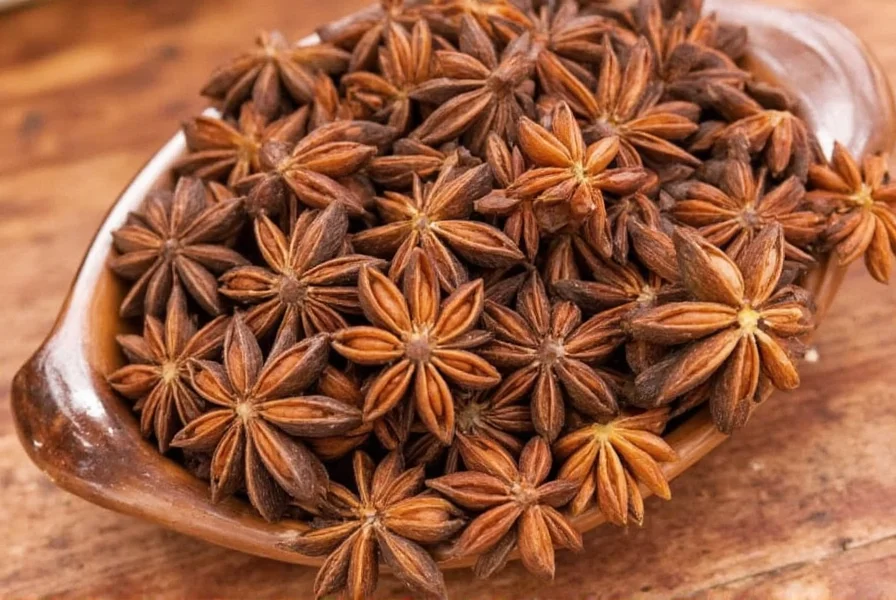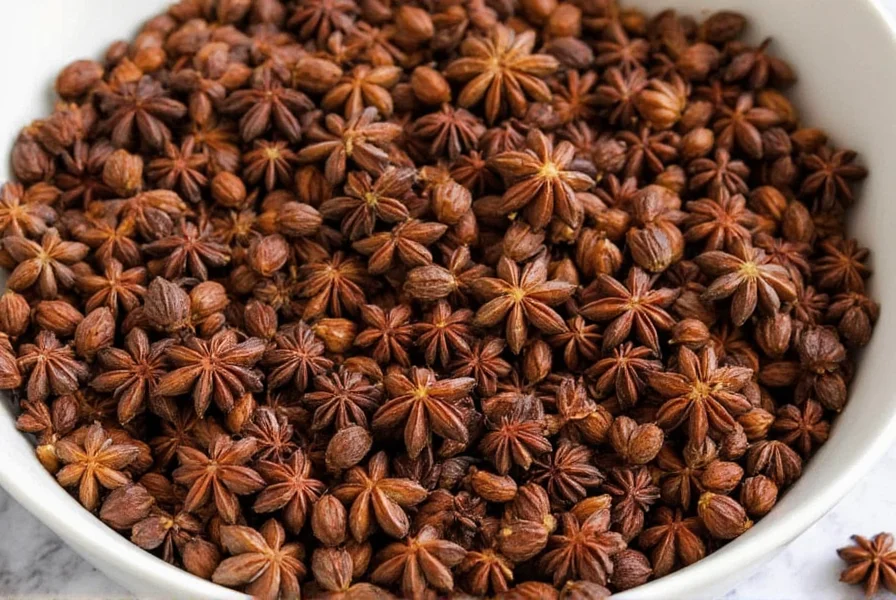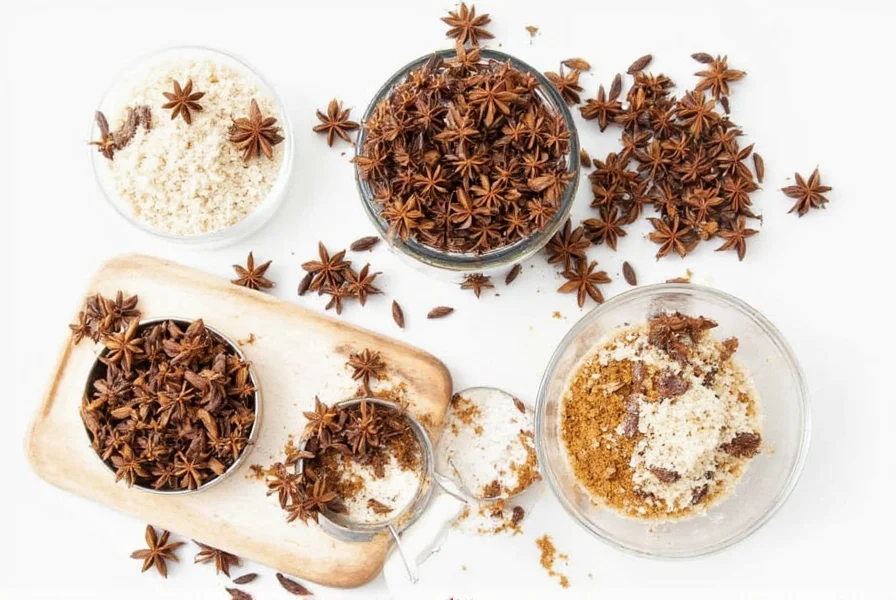Star anise brings a distinctive licorice-like flavor to dishes ranging from Vietnamese pho to Chinese braises and even baked goods. When you're out of this star-shaped spice, knowing effective replacements can save your recipe without compromising authenticity. Understanding what makes star anise unique—its sweet, warm, slightly peppery notes with prominent anethole (the same compound found in anise and fennel)—helps identify suitable alternatives that maintain your dish's intended flavor profile.
Understanding Star Anise Flavor Profile
Before exploring star anise replacement options, it's crucial to understand what makes this spice special. Star anise (Illicium verum) contains 80-90% anethole, giving it that characteristic licorice flavor. Unlike anise seed (which comes from a different plant), star anise maintains its flavor through long cooking times, making it indispensable in slow-simmered dishes like pho broth and Chinese red-cooked meats. The whole star shape allows for easy removal after cooking, while ground star anise integrates more thoroughly.
Top Single-Ingredient Star Anise Substitutes
When you need a straightforward star anise replacement without combining multiple spices, these options work best:
| Substitute | Measurement | Best For | Limitations |
|---|---|---|---|
| Chinese Five Spice Powder | ½ tsp per 1 star | Stir-fries, marinades, roasted meats | Contains additional flavors (cinnamon, cloves) |
| Anise Seeds | ¼ tsp ground per 1 star | Baking, desserts, light sauces | Less complex, burns easily in high-heat cooking |
| Fennel Seeds | ½ tsp crushed per 1 star | Fish dishes, vegetable preparations | Milder flavor, lacks peppery notes |
Effective Combination Substitutes
For dishes where star anise plays a starring role—particularly in Vietnamese pho or Chinese master stock—combination substitutes better replicate the complex flavor profile. These star anise replacement blends work particularly well for slow-cooked dishes:
- Pho-Specific Blend: 1 cinnamon stick + 3 whole cloves + ½ teaspoon fennel seeds (simmer together)
- General Cooking Blend: ¼ teaspoon ground cloves + ¼ teaspoon ground fennel + ⅛ teaspoon ground cinnamon
- Baking Blend: ¼ teaspoon anise extract + ⅛ teaspoon ground cardamom (add to wet ingredients)
When using these combinations as a star anise replacement for pho, add them at the beginning of broth preparation to allow flavors to fully develop. The combination approach addresses star anise's unique balance of sweet, licorice, and subtle peppery notes that single ingredients can't fully replicate.

When to Use Each Star Anise Replacement
Not all substitutes work equally well across different applications. Consider these guidelines when selecting your star anise replacement measurements:
Asian Cuisine Applications
For Chinese braises and Vietnamese broths, whole spice combinations work best. Use the pho-specific blend mentioned above when making broth from scratch. In Chinese five-spice dependent recipes, Chinese five spice powder makes the most practical star anise substitute for baking applications where ground spices are preferred.
Baking and Desserts
Ground anise seed or anise extract works better in baked goods than whole spice blends. For cookies, cakes, and fruit compotes, use ¼ teaspoon ground anise seed per star anise called for in the recipe. In liquid-based desserts like poached pears, add ⅛ teaspoon anise extract near the end of cooking to preserve its volatile compounds.
What NOT to Use as Star Anise Replacement
Avoid these common but ineffective substitutes that alter your dish's intended flavor profile:
- Allspice: Creates an overly clove-like flavor without the licorice notes
- Fennel fronds: Too delicate and herbaceous, lacks concentrated flavor
- Anise liqueur: Adds unwanted alcohol content and sweetness
- Black licorice candy: Contains sugar and artificial flavors that disrupt savory dishes
Storage Tips for Star Anise and Substitutes
To maximize shelf life of both star anise and its substitutes, store them properly:
- Keep whole star anise in airtight containers away from light (maintains potency for 2-3 years)
- Ground substitutes lose potency faster—use within 6 months for best results
- Freeze whole star anise for long-term storage (up to 4 years)
- Label containers with purchase date to track freshness
When using older spices as star anise replacement measurements, increase quantities by 25% to compensate for diminished flavor. Freshly ground substitutes generally provide more intense flavor than pre-ground versions.

Final Considerations for Perfect Substitution
The ideal star anise replacement depends on your specific recipe and what's available in your pantry. For most home cooks, keeping Chinese five spice powder on hand provides the most versatile star anise substitute for baking and cooking applications. When making pho specifically, the three-spice blend delivers the closest approximation to authentic flavor.
Remember that star anise's potency varies by growing region and age, so treat all measurements as starting points. Taste your dish as it cooks and adjust seasoning accordingly—this approach works better than rigidly following replacement ratios. With these guidelines for star anise replacement, you'll maintain the essential flavor profile your recipe requires even when this distinctive spice isn't available.











 浙公网安备
33010002000092号
浙公网安备
33010002000092号 浙B2-20120091-4
浙B2-20120091-4